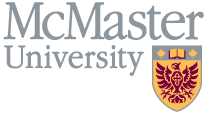
Clinician Article
Effect of statins and non-statin LDL-lowering medications on cardiovascular outcomes in secondary prevention: a meta-analysis of randomized trials.
PMID: 29069377
-
Family Medicine (FM)/General Practice (GP)Relevance - 6/7
Newsworthiness - 5/7 -
General Internal Medicine-Primary Care(US)Relevance - 6/7
Newsworthiness - 5/7 -
Internal MedicineRelevance - 6/7
Newsworthiness - 5/7 -
CardiologyRelevance - 5/7
Newsworthiness - 4/7
Abstract
AIMS: Current evidence on dyslipidaemia management has expanded to novel treatments and very low achieved levels of low-density lipoprotein cholesterol (LDL-C). We sought to compare the clinical impact of more-intensive vs. less-intensive LDL-C lowering by means of statins and currently recommended non-statin medications in secondary prevention.
METHODS AND RESULTS: We searched Medline, EMBASE, and Cochrane databases for randomized controlled trials of statins, ezetimibe, proprotein convertase subtilisin-kexin type 9 (PCSK9) inhibitors, or bile acid sequestrants with >500 patients followed for =1 year. We employed random-effects models using risk ratios (RRs) with 95% confidence intervals (CIs) to compare outcomes. We included 19 trials (15 of statins, 3 of PCSK9 inhibitors, and 1 of ezetimibe) with 152 507 patients randomly assigned to more-intensive (n = 76 678) or less-intensive treatment (n = 75 829). More-intensive treatment was associated with 19% relative risk reduction for the primary outcome, major vascular events (MVEs; RR 0.81, 95% CI 0.77-0.86). Risk reduction was greater across higher baseline levels and greater achieved reductions of LDL-C. The clinical benefit was significant across varying types of more-intensive treatment and was consistent for statins (RR 0.81, 95% CI 0.76-0.86) and non-statin agents (PCSK9 inhibitors and ezetimibe; RR 0.85, 95% CI 0.77-0.94) as active (more-intensive) intervention (P-interaction = 0.38). Each 1.0 mmol/L reduction in LDL-C was associated with 19% relative decrease in MVE. Death, cardiovascular death, myocardial infarction, stroke, and coronary revascularization also favoured more-intensive treatment.
CONCLUSION: Reduction of MVE is proportional to the magnitude of LDL-C lowering across a broad spectrum of on-treatment levels in secondary prevention. Statin intensification and add-on treatment with PCSK9 inhibitors or ezetimibe are associated with significant reduction of cardiovascular morbidity in this very high-risk population.
Clinical Comments
Internal Medicine
This is a useful summary, but the arguments around the value of ezetemibe add-on to statins vs increasing dose of statin seem highly flawed. Cost-effectiveness of each degree of LDL lowering comparing each of the various strategies is now the key unknown.


